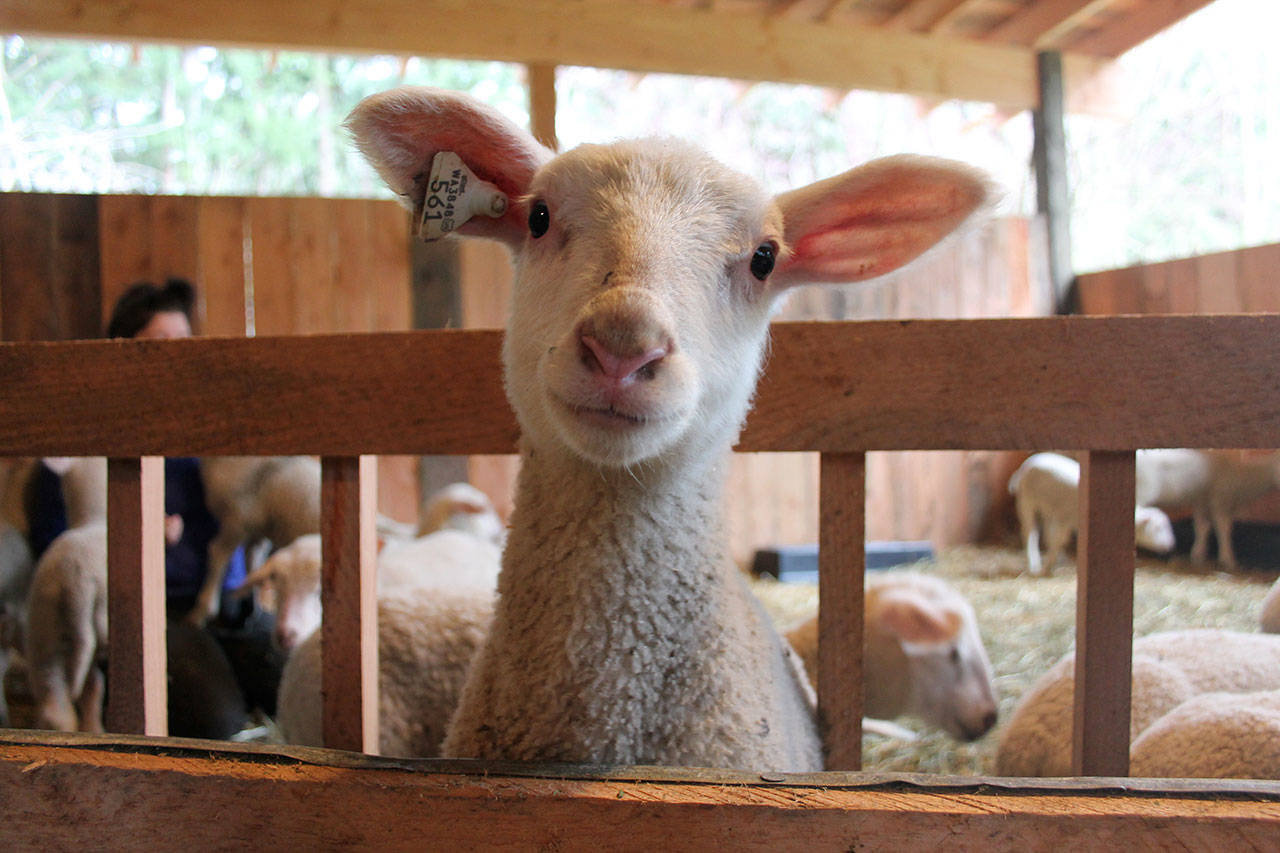It’s spring, and that means lamb season.
For shepherds, it can be a daunting time of year that entails long hours and constant monitoring of sheep and their fragile, gangly lambs. But it’s also a time for “oohs,” “ahhs” and quality cuddling time.
“Lambing season is a lot of hard work and there are long hours and regular checks in the middle of the night,” said Lynn Swanson, co-owner of Clinton-based Glendale Shepherd. “But it’s still one of the most rewarding times of the year, because the lambs are just beautiful.”
Lambing season typically begins between March and April, primarily because shepherds normally plan for the warmer spring months to avoid chilly weather. A ram is introduced to a flock in the fall, so nature can do its work and bring lambs a few months down the road. Sheep take five months to gestate.
Glendale Shepherd, along with 4-H clubs on South Whidbey, start their seasons early. Glendale Shepherd begins its season in January since it’s a dairy farm and needs the sheep’s milk earlier in the year for cheese production. An ewe’s milk dries up when the temperature drops in the fall, so the winter months see a slow-down in cheese production. The 4-H sheep groups, such as the Whidbey Shepherds, have to coordinate with Whidbey Island Fair dates, so their season starts in December and wraps up as early as April, according to Whidbey Shepherds lead Heather Kline.
The average day during lambing season involves round-the-clock activity. Swanson says the team at Glendale Shepherd has a five-person “night watch” who check the barns at 10 p.m., 2 a.m., and 6 a.m. The regular checks are made to separate lambs from ewes to insure the ewes still have milk in the morning for cheese production — lambs are hungry little devils. Lambs are placed in a warm barn to minimize losses, where they then snuggle up on top of each other for added warmth and feed off a LAC-TEK Milk Machine. Health checks follow.
For small-scale shepherds, lambing season can look very different. For Langley resident Joyce Fossek and her half dozen flock, the season is much more hands-off. She doesn’t need to meet a demand for dairy or meat, so she lets nature do its work and watches from her window. All she has to do is feed the sheep and let them graze.
“I believe the sheep know best how to do these things, especially since I have so few of them,” Fossek said. “I call myself a lazy sheep farmer.”
Some shepherds allow for cuddle time with the little lambs, since they say so many people ask to pet them. If someone is lucky, they’ll be allowed inside a pen. Lambs are friendly, and may rush toward people in packs and jump all over them like puppies. Shepherds say not to be shy about asking; they understand the draw.


